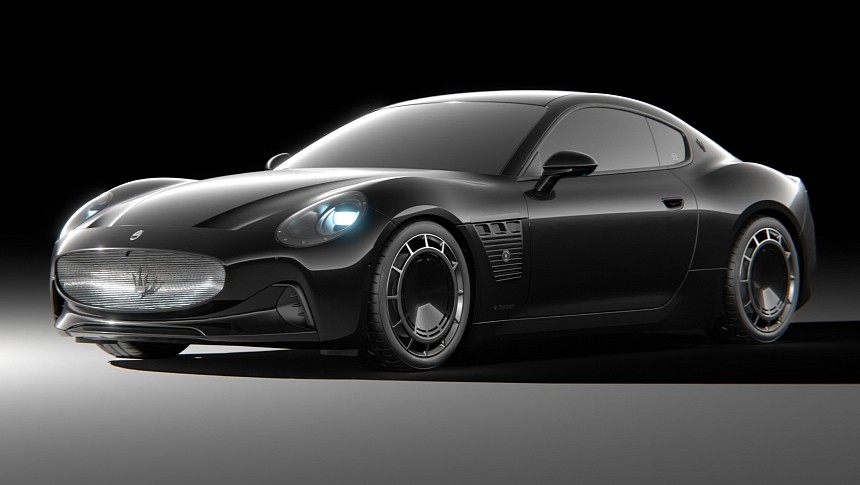GranTurismo is Maserati's way of referring to its perennial grand tourer, a car that embodies more than 75 years of heritage. Tracing its roots back to the A6 series of 1947 to 1956, the GranTurismo ran between 2007 and 2019 with cross-plane V8 engines designed by Ferrari.
The naturally-aspirated forerunners were discontinued in favor of a 3.0L twin-turbo V6 for the all-new GranTurismo, which may seem a little curious. On the other hand, the so-called Nettuno is more powerful, torquier, and more frugal than the previous gen's V8s.
Technically impressive, the Nettuno rubs Maserati loyalists the wrong way due to the Italian automaker's blatantly false claim that it's a unique design. The House of the Trident claims that it's 100 percent Maserati even though it's easy to make connections between the Nettuno and two engines. First and foremost, the 690T used by Alfa Romeo in Quadrifoglio hi-po models. And secondly, the F154 that replaced the F136 mentioned a bit earlier.
Based on a Maserati-specific version of the Giorgio platform developed by Alfa Romeo in collaboration with Ferrari, the GranTurismo can be specified with all-electric muscle as well. Dubbed Folgore, the three-motor EV served as the basis for the "Ouroboros" virtual concept revealed at the 2023 Milan Design Week.
Penned by Japanese designer, musician, and producer Hiroshi Fujiwara, this jaw-dropping design study puts a retro twist on the GranTurismo Folgore by adopting classic design elements from the likes of the A6GCS Berlinetta Pininfarina and 3500 GT. Racecar influences are present as well, notably the Tipo 151-like round headlights. The forged wheels bring us into the 1970s, for they're based on the Bora's magnesium alloys. Last but not least, the taillight fascia draws inspiration from the Shamal, the last series-production Maserati launched during the Alejandro de Tomaso era. The Argentinian businessman and racing driver sold his share to Fiat back in 1993.
A pioneer of Ura-Harajuku streetwear, Fujiwara says that his design study is named Ouroboros after the symbol that depicts a serpent munching on its own tail. Derived from the Greek words for tail and eating, Ouroboros can be interpreted in plenty of ways. Fujiwara goes for the standard meaning of eternal cyclic renewal, which perfectly describes the fashion world and – to some degree – the automotive world as well.
Maserati doesn't plan to make a limited run of the Ouroboros, which is only natural given that Maserati still hasn't proven itself worthy as a Stellantis marque in terms of sales and profitability. The House of the Trident returned in the black in 2021 after tremendous losses.
The first order of business for Maserati is to improve operating margins to over 15 percent from the 8.7 reported in 2022. Ferrari, by comparison, reported a whopping 24 percent. If the Modena-based automaker manages to improve, then a spinoff may follow suit.
Technically impressive, the Nettuno rubs Maserati loyalists the wrong way due to the Italian automaker's blatantly false claim that it's a unique design. The House of the Trident claims that it's 100 percent Maserati even though it's easy to make connections between the Nettuno and two engines. First and foremost, the 690T used by Alfa Romeo in Quadrifoglio hi-po models. And secondly, the F154 that replaced the F136 mentioned a bit earlier.
Based on a Maserati-specific version of the Giorgio platform developed by Alfa Romeo in collaboration with Ferrari, the GranTurismo can be specified with all-electric muscle as well. Dubbed Folgore, the three-motor EV served as the basis for the "Ouroboros" virtual concept revealed at the 2023 Milan Design Week.
Penned by Japanese designer, musician, and producer Hiroshi Fujiwara, this jaw-dropping design study puts a retro twist on the GranTurismo Folgore by adopting classic design elements from the likes of the A6GCS Berlinetta Pininfarina and 3500 GT. Racecar influences are present as well, notably the Tipo 151-like round headlights. The forged wheels bring us into the 1970s, for they're based on the Bora's magnesium alloys. Last but not least, the taillight fascia draws inspiration from the Shamal, the last series-production Maserati launched during the Alejandro de Tomaso era. The Argentinian businessman and racing driver sold his share to Fiat back in 1993.
A pioneer of Ura-Harajuku streetwear, Fujiwara says that his design study is named Ouroboros after the symbol that depicts a serpent munching on its own tail. Derived from the Greek words for tail and eating, Ouroboros can be interpreted in plenty of ways. Fujiwara goes for the standard meaning of eternal cyclic renewal, which perfectly describes the fashion world and – to some degree – the automotive world as well.
Maserati doesn't plan to make a limited run of the Ouroboros, which is only natural given that Maserati still hasn't proven itself worthy as a Stellantis marque in terms of sales and profitability. The House of the Trident returned in the black in 2021 after tremendous losses.
The first order of business for Maserati is to improve operating margins to over 15 percent from the 8.7 reported in 2022. Ferrari, by comparison, reported a whopping 24 percent. If the Modena-based automaker manages to improve, then a spinoff may follow suit.











